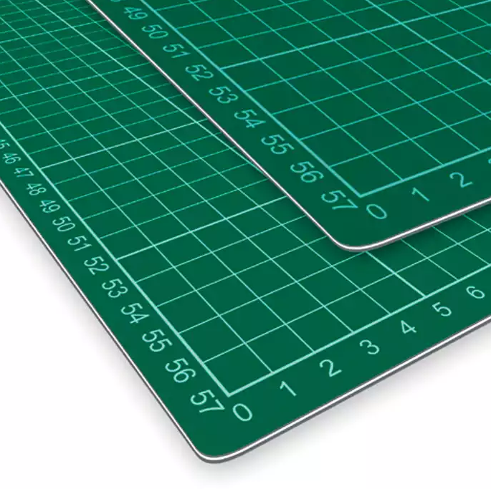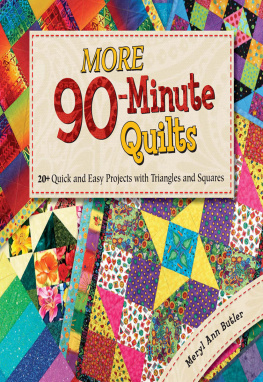Quilting for Beginners
A Step-By-Step Guide to Making Beautiful Quilts That Can Stand the Test of Time
Copyright Notice
Reproduction, duplication, transmission of this document in part or in whole is permitted only with written permission from the publisher. All rights reserved.
Respective brands and trademarks mentioned in this book belong to their respective owners.
Disclaimer
This document is geared towards providing summarization of information related to the topic. While all attempts have been made to verify the accuracy of the information, the author does not assume any responsibility for errors, omissions, or interpretations of the content. The information is offered for informational or entertainment purposes only. If professional advice is necessary, a qualified legal, medical, financial or another respective professional should be consulted. The reader is responsible for his or her own actions. The publisher does not accept any responsibility or liability arising from damages or losses, real or perceived, direct or indirect, resulting from the use of this information.
Table of Contents
Introduction
W hen someone says quilting, chances are you conjure up the image of a happy older lady stitching fabric together. While this image is accurate on some levels, anyone can become a quilter if they desire. At its most basic quilting is the stitching together of several layers of fabric and padding to create a blanket. It is nearly impossible to pinpoint exactly when quilting began, but there are samples of quilting dating back to Ancient Egypt.
Quilts have long been made for a variety of things. From giving a first heirloom to a newly married couple to welcoming a baby into the family. Quilts that are made by hand and with love will always stand the test of time and outlast anything that has been mass produced.
If you are ready to jump into the wonderful world of quilting, this is the book for you. Inside the pages of this book, you will learn about the tools you will need for quilting and some simple but elegant patterns you can make. When you jump fully into the world of quilting, you will learn that you can make just about anything that you can imagine, quilting truly is a form of art. Further proof of how artful quilts can be is found in the many competitions around the world that involve quilts from those which will go on a bed, to those which are made as art to hang directly on the wall. Once you get comfortable with the basics you can choose to make anything you like.
Bonus: Your FREE Gift

As a token of our appreciation, please take advantage of the FREE Gift - a lifetime VIP Membership at our book club.

or open it in your browser: http://bit.ly/vipbooks
As a VIP member, you will get an instant FREE access to exclusive new releases and bestselling books.
Learn more

Chapter One: The Basics Tools of Quilting
O ne of the most important things a quilter can have is the right tools. As in any trade if you have the right tools you will make a quality end product if you have the wrong tools you may not get the best result. The biggest problem most new quilters run into is not knowing exactly what tools you need to have on hand for projects.
Enter into any craft store and when you hit the aisles, you will see rows and rows of items that can make you feel overwhelmed. In this chapter, we will take some of that overwhelmed feeling away by helping you know exactly what you need when you start making your first quilt. There may be fancier tools and things you can use as tricks once you get deeper into the hobby of quilting, but all you truly need are a solid set of basics.
Rotary Cutters

T he first thing any quilter needs is a good rotary cutter. The rotary cutter is the perfect tool to get perfectly straight and clean cuts of fabric when you need certain shapes and sizes. The best rotary cutter for a beginner to start with is a simple 45mm size blade. Rotary cutters can be found in a great variety of sizes everything from a small 18mm to a large 60mm. Different size blades are better for different things, the smaller blades are used for making curved cuts and pieces while the larger blade such as the 60mm is designed to cut through several layers of fabric at one time. The reason the 45mm is best situated for beginners is because it is very user-friendly and has great maneuverability while also being able to cut through more than one layer of fabric if needed.
Self-Healing Mats

T here are several kinds of cutting mats on the market, but a self-healing mat is a perfect mat for any quilter. Many self-healing mats will have rulers and grids, so you are able to easily keep your measurements correct when cutting pieces for your quilt. Self-healing is best so that the mat will not get cut up and ragged which can snag your fabric. Self-healing mats come in several sizes from larger to smaller and while a smaller one will be less expensive it can make trouble for you overall, it is harder to see measurements when cutting on a smaller board. The best thing to do is get the largest mat you can afford at the time.
Pins

H aving the right pins is just as crucial as having the right fabric, and when you go into the fabric store, you will be met with a great many different kinds of pins to choose from. Making sure that you have the right ones is important because the pins hold your fabric together while you are sewing the layers together. When you use the right pins, you guarantee fewer snags and less missed seams so you won't have to tear out your work. The best pins for quilting on those with a very fine and sharp point and a glass head. When you choose a glass head over other types, you won't have to worry about melting under the heat of an iron or steam.
Quilting Ruler

You may think that as long as you have a self-healing mat with a grid that you do not need a ruler. This is not true at all; everyone who is going to get into the quilting hobby needs at least one good ruler. Having a ruler ensures that you can make easy cuts in your fabric without having to second guess and when you combine the ruler with a self-healing mat grid you are covering every base you have. It is recommended that you get a longer ruler, so you do not have to move it when cutting longer bits of fabric and having a wider one is useful as a backup as well. When you look at the ruler section in the craft store just like any other section, you will have many choices. Select the ruler that is going to work best for you and the projects that you plan on doing, get more than one if you feel the need, but always remember never to get anything flimsy and cheap when it comes to your rulers for quilting. The reason you need to invest in a good ruler is because this is a tool you will use every time you quilt and when you invest in something good at the outset you will not have to replace the tool every year or so like you do with some of the cheaper rulers.
Next page


















